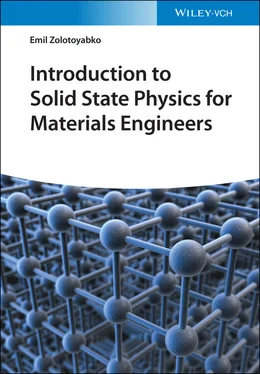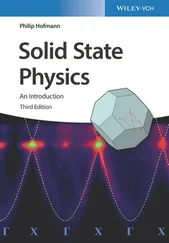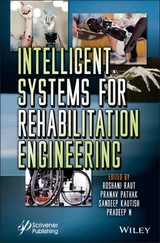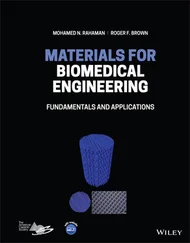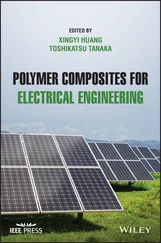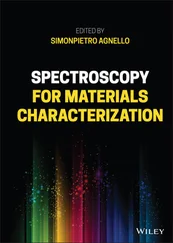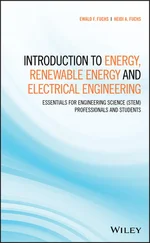1 Cover
2 Title Page
3 Copyright Author Professor Emil Zolotoyabko Technion - Israel Institute of Technology Department of Materials Science and Engineering Technion City 32000 Haifa Israel All books published by WILEY-VCH are carefully produced. Nevertheless, authors, editors, and publisher do not warrant the information contained in these books, including this book, to be free of errors. Readers are advised to keep in mind that statements, data, illustrations, procedural details or other items may inadvertently be inaccurate. Library of Congress Card No.: applied for British Library Cataloguing-in-Publication Data A catalogue record for this book is available from the British Library. Bibliographic information published by the Deutsche Nationalbibliothek The Deutsche Nationalbibliothek lists this publication in the Deutsche Nationalbibliografie; detailed bibliographic data are available on the Internet at < http://dnb.d-nb.de >. © 2021 WILEY-VCH GmbH, Boschstr. 12, 69469 Weinheim, Germany All rights reserved (including those of translation into other languages). No part of this book may be reproduced in any form – by photoprinting, microfilm, or any other means – nor transmitted or translated into a machine language without written permission from the publishers. Registered names, trademarks, etc. used in this book, even when not specifically marked as such, are not to be considered unprotected by law. Print ISBN: 978-3-527-34884-8 ePDF ISBN: 978-3-527-83158-6 ePub ISBN: 978-3-527-83159-3
4 Dedication To My Wife Roza With the Deepest Feeling of Gratitude for Her Life-Long Love, Support, and Assistance
5 Preface
6 Introduction
7 1 General Impact of Translational Symmetry in Crystals on Solid State Physics 1.1 Crystal Symmetry in Real Space 1.2 Symmetry and Physical Properties in Crystals 1.3 Wave Propagation in Periodic Media and Construction of Reciprocal Lattice 1.A Symmetry Constraints on Rotation Axes 1.B Twinning in Crystals
8 2 Electron Waves in Crystals 2.1 Electron Behavior in a Periodic Potential and Energy Gap Formation 2.2 The Brillouin Zone 2.3 Band Structure 2.4 Graphene 2.5 Fermi Surface 2.A Cyclotron Resonance and Related Phenomena
9 3 Elastic Wave Propagation in Periodic Media, Phonons, and Thermal Properties of Crystals 3.1 Linear Chain of the Periodically Positioned Atoms 3.2 Phonons and Heat Capacity 3.3 Thermal Vibrations of Atoms in Crystals 3.4 Crystal Melting 3.5 X-ray and Neutron Interaction with Phonons 3.6 Lattice Anharmonicity 3.7 Velocities of Bulk Acoustic Waves 3.8 Surface Acoustic Waves 3.A Bose's Derivation of the Planck Distribution Function
10 4 Electrical Conductivity in Metals 4.1 Classical Drude Theory 4.2 Quantum–Mechanical Approach 4.3 Phonon Contribution to Electrical Resistivity 4.4 Defects' Contributions to Metal Resistivity 4.A Derivation of the Fermi-Dirac Distribution Function
11 5 Electron Contribution to Thermal Properties of Crystals 5.1 Electronic Specific Heat 5.2 Electronic Heat Conductivity and the Wiedemann–Franz Law 5.3 Thermoelectric Phenomena 5.4 Thermoelectric Materials
12 6 Electrical Conductivity in Semiconductors 6.1 Intrinsic (Undoped) Semiconductors 6.2 Extrinsic (Doped) Semiconductors 6.3 p–n Junction 6.4 Semiconductor Transistors 6.A Estimation of Exciton's Radius and Binding Energy
13 7 Work Function and Related Phenomena 7.1 Work Function of Metals 7.2 Photoelectric Effect 7.3 Thermionic Emission 7.4 Metal-Semiconductor Junction 7.A Image Charge Method 7.B A Free Electron Cannot Absorb a Photon
14 8 Light Interaction with Metals and Dielectrics 8.1 Skin Effect in Metals 8.2 Light Reflection from a Metal 8.3 Plasma Frequency 8.4 Introduction to Metamaterials 8.5 Structural Colors 8.A Acoustic Metamaterials
15 9 Light Interaction with Semiconductors 9.1 Solar Cells 9.2 Solid State Radiation Detectors 9.3 Charge-Coupled Devices (CCDs) 9.4 Light-Emitting Diodes (LEDs) 9.5 Semiconductor Lasers 9.6 Photonic Materials
16 10 Cooperative Phenomena in Electron Systems: Superconductivity 10.1 Phonon-Mediated Cooper Pairing Mechanism 10.2 Direct Measurements of the Superconductor Energy Gap 10.3 Josephson Effect 10.4 Meissner Effect 10.5 SQUID 10.6 High-Temperature Superconductivity 10.A Fourier Transform of the Coulomb Potential 10.B The Josephson Effect Theory 10.C Derivation of the Critical Magnetic Field in Type I Superconductors
17 11 Cooperative Phenomena in Electron Systems: Ferromagnetism 11.1 Paramagnetism and Ferromagnetism 11.2 The Ising Model 11.3 Magnetic Structures 11.4 Magnetic Domains 11.5 Magnetic Materials 11.6 Giant Magnetoresistance 11.A The Elementary Magnetic Moment of an Electron Produced by its Orbital Movement 11.B Pauli Paramagnetism 11.C Magnetic Domain Walls
18 12 Ferroelectricity as a Cooperative Phenomenon 12.1 The Theory of Ferroelectric Phase Transition 12.2 Ferroelectric Domains 12.3 The Piezoelectric Effect and Its Application in Ferroelectric Devices 12.4 Other Application Fields of Ferroelectrics
19 13 Other Examples of Cooperative Phenomena in Electron Systems 13.1 The Mott Metal–Insulator Transition 13.2 Classical and Quantum Hall Effects 13.3 Topological Insulators 13.A Electron Energies and Orbit Radii in the Simplified Bohr Model of a Hydrogen-like Atom
20 Further Reading
21 List of Prominent Scientists Mentioned in the Book
22 Index
23 End User License Agreement
1 Chapter 1 Table 1.1 Summary of possible symmetries in regular crystals. Table 1.2 Possible types of rotation axes permitted by translational symmetry...
2 Chapter 4Table 4.1 Specific electrical resistivity of selected metals.Table 4.2 Defects' contribution to electrical resistivity of Al.
3 Chapter 5Table 5.1 Fermienergies for selected metals.Table 5.2 Thermal conductivity in the selected metals.
4 Chapter 6Table 6.1 Bandgaps in the selected semiconductors.
5 Chapter 7Table 7.1 The values of work function in selected metals.
6 Chapter 10Table 10.1 Critical temperatures ( T cin Kelvins) and critical magnetic fields...
7 Chapter 11Table 11.1 Magnetic characteristics of the selected permanent magnets.
8 Chapter 12Table 12.1 Piezoelectric moduli d ik(in pC/N) for selected materials.Table 12.2 Band gaps for selected ferroelectrics.
1 Chapter 1 Figure 1.1 High-resolution scanning transmission electron microscopy image o... Figure 1.2 Structural motifs in silicon dioxide (SiO 2): (a) – ordered atomic... Figure 1.3 Dense filling of 2D space by spatially ordered, though non-period... Figure 1.4 Dense filling of 2D space by regular geometrical figures. Figure 1.5 Dodecahedron sculpted by 12 pentagonal faces. Figure 1.6 Icosahedron sculpted by 20 triangular faces. Figure 1.7 Regular pentagon with edges equal a pand diagonals equal d p. The ... Figure 1.8 Unit cells of the following side-centered Bravaislattices: A-typ... Figure 1.9 Unit cells of the following centered Bravaislattices: (a) face-c... Figure 1.10 Lattice translations (red arrows) in the rhombohedral setting of... Figure 1.11 The presence of inversion center ( C) in diamond structure (a) an... Figure 1.12 Illustration of the Biot–Savartlaw (Eq. (1.7)). Figure 1.13 Illustration of the wave scattering in a periodic medium. Figure 1.14 Sketch of a crystal plane, normal to the vector of reciprocal la... Figure 1.15 Graphical interrelation between wavevectors of the incident ( k i)... Figure 1.16 The traces of isoenergetic surfaces (red curves) in reciprocal s... Figure 1.17 Illustration of the restrictions imposed by translational symmet... Figure 1.18 Illustration of the simultaneous appearance of several high-orde... Figure 1.19 Illustration of twin formation in monoclinic lattice via mirror ... Figure 1.20 Illustration of twin formation in orthorhombic lattice via mirro...
Читать дальше
